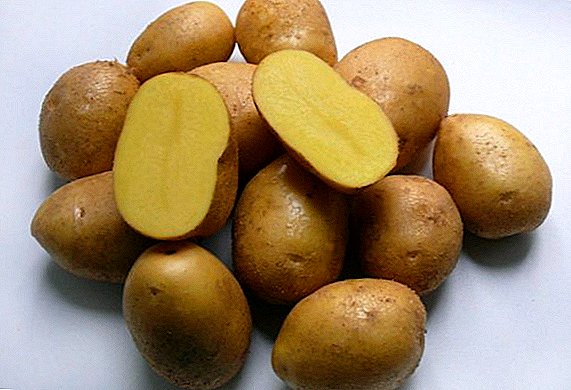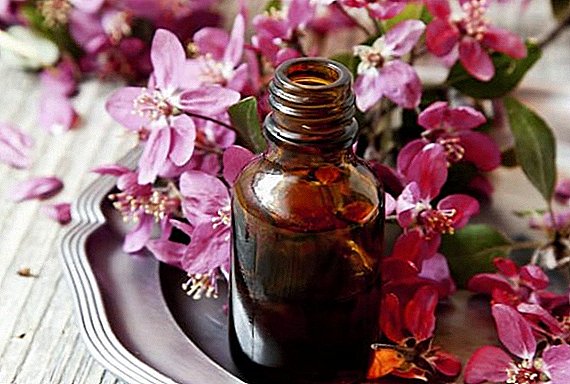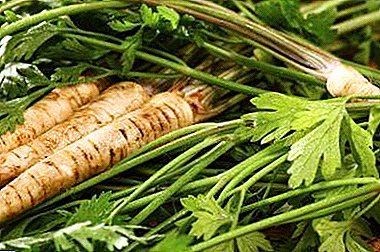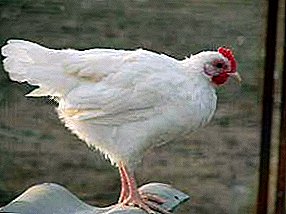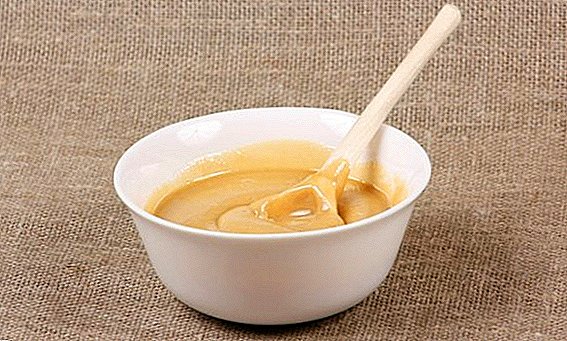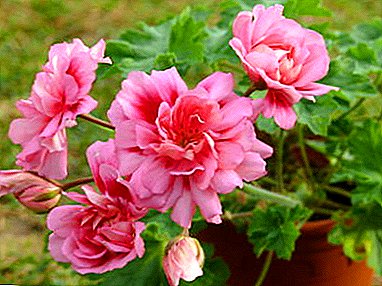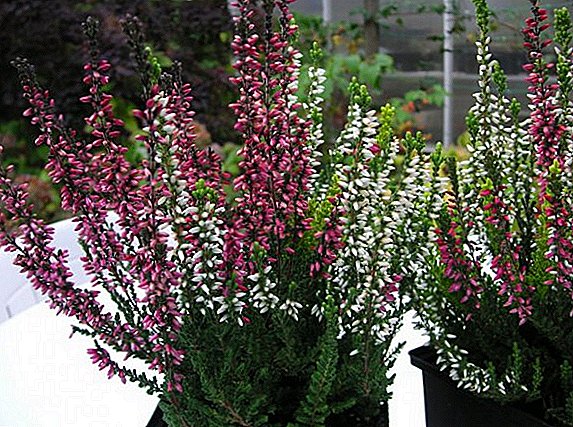 Heather belongs to a large heather family, which has more than 500 species. Africa is home to most species. Heather - it is an evergreen shrub whose stems are dotted with small flowers, shaped like bells of various shades of lilac, lilac, white, pink and purple.
Heather belongs to a large heather family, which has more than 500 species. Africa is home to most species. Heather - it is an evergreen shrub whose stems are dotted with small flowers, shaped like bells of various shades of lilac, lilac, white, pink and purple.
Did you know? Heather is the national flower of Norway.
 In nature, common heather is most common, and slender heather and wintering heather are adapted to domestic conditions.
In nature, common heather is most common, and slender heather and wintering heather are adapted to domestic conditions.
Heather slim - evergreen shrub up to 40 cm high. Leaves are light green, up to 5 mm long. The flowers have a pink-red color, are located at the ends of the side shoots, 4 pcs. in each.
Wintering heather grows to a height of 50 cm, and its flowers are larger (up to 2 cm) and have a white color.
Did you know? In Scotland, heather leaves were used to make a yellow dye in the manufacture of fabric, from which the famous Scottish plaids and kilts were then sewn.
Conditions for growing indoor heather
These plants are sun-loving, but they do not tolerate heat very well. To achieve the best results when growing heather at home, you must create a suitable microclimate for it and do not forget to regularly ventilate the room.
Landing heather
If you decide to plant heather at home, then keep in mind that it is cultivated at home as an annual plant. You can grow it further: after the plant ottsvetet, you should feed the soil, and then cut the bush, only then the plant will retain its attractive appearance for next year.
Requirements for planting material
 The root system of the plant must be closed, otherwise it will be damaged and the heather will die.
The root system of the plant must be closed, otherwise it will be damaged and the heather will die.
Shoots must be resilient and leafy, and at their ends must be active vegetative buds.
Pot and soil requirements
Indoor heather species are very demanding on the soil. Peaty or sour sandy substrates are best suited for them. The pot must be deeper than the length of the roots.
Flower planting scheme
- The bottom of the pot is filled with the necessary substrate a few centimeters so that the root system can later expand;
- Then, very carefully move the planting material to the pot so that the root system remains intact;
- Fill in the missing land without ramming it, otherwise the root system may be damaged;
- In conclusion, the plant can be watered, put some more land on it. The process of getting enough sleep should be repeated several times as necessary.
Rules for the care of heather in a pot
To the plant never ceased to please you with beauty, you need to know how to care for heather at home. It’s enough to follow simple but important rules:
- Water the plant only with clean water that does not contain chlorine and lime, at room temperature;
- Substrate can not be overdry;
- The temperature regime in the summer is +18 -25 ° С, in the winter time - +8 -12 ° С;
- In the offseason, if possible, to make the street, while protecting the plant from drafts;
- In the period of spring-autumn it is necessary to spray the plant with warm water daily;
- In a timely manner to make dressing;
- Periodically acidify the soil with spruce bark or sulfur.

Irrigation and spraying rules
Heather requires regular, but not abundant watering, so that the soil simply remains wet. Spraying is needed only in the warm season.
Important! If you overdo it with watering, the heather drops its blooming buds. Over-wetting should not be allowed!
Feed dressing
Feeding needed heather annually. To do this, use complex mineral fertilizers, which can be bought in a special store. They need to scatter around the plant, it is very important not to touch the flowers and leaves, from a high concentration of fertilizers, they can “burn”.
Features of a flower transplant
 Heather is very difficult to transfer, because it has an underdeveloped root system. It can cause damage to the roots, as well as mycorrhiza mycelium.
Heather is very difficult to transfer, because it has an underdeveloped root system. It can cause damage to the roots, as well as mycorrhiza mycelium.
Therefore, for home heath is usually bought in special containers, and transplanted along with a clod of earth. Also, transplanting can destroy heather, if the new soil is not sufficiently acidified and will be neutral or alkaline.
How to multiply heather at home
Heather at home breeds in three ways:
- seeds;
- cuttings;
- division of the bush.
 Under all conditions, they should appear in about 3-4 weeks after sowing. During the first week, the humidity should be kept high, and then the shoots should be sprayed about 4-5 times a month. In the summer, be sure to take them to fresh air.
Under all conditions, they should appear in about 3-4 weeks after sowing. During the first week, the humidity should be kept high, and then the shoots should be sprayed about 4-5 times a month. In the summer, be sure to take them to fresh air.
Important! Direct rays can damage immature shoots, so they should be protected from direct exposure to the sun.
You can sit in pots after 8-10 months.
Cuttings for breeding cut in late summer. Use for this you need not flowering, strong shoots. Cuttings should be rooted in separate pots. A loose soil mixture of equal proportions of peat and sand, poor in nutrients, and it must be constantly moisturized. Rooting occurs at a temperature of + 15-20 ° C.
 However, the most reliable, easiest and fastest way to breed heather is separation of rhizomes into two parts. To carry out this procedure is necessary after flowering. The plant must be pulled out of the pot and divided into parts.
However, the most reliable, easiest and fastest way to breed heather is separation of rhizomes into two parts. To carry out this procedure is necessary after flowering. The plant must be pulled out of the pot and divided into parts.
Important!Earthy ball can not shake, the plant must be divided with him.
To avoid damage to the root system in any case will not succeed, but still try to do it as gently as possible. Then both parts are seated in pots as independent plants, plentifully watered and necessarily fed.
Diseases and pests of the flower
Disease and pests affect the heather flower much less frequently at home than when growing outside, but the risk is still there, mainly due to excessive soil moisture.
The main pests that can affect the plant are scythe. Morning sprays with soapy water are used as a treatment.
When water stagnates in the roots, the plant strikes gray rot. The first signs are gray bloom on shoots, foliage abscission, partial death of young shoots.
 When they appear, it is necessary to urgently treat the plant with antifungal drugs. Processing is carried out in 2-3 doses with an interval of 6-10 days. Early spring or late fall is best for prevention.
When they appear, it is necessary to urgently treat the plant with antifungal drugs. Processing is carried out in 2-3 doses with an interval of 6-10 days. Early spring or late fall is best for prevention.
If the leaves turn brown and the tops of the young shoots start to wither, this is a sign that you overdone with fertilizers.
Another plant can strike powdery mildew. Because of this disease, young shoots begin to dry out, and the leaves are covered with a grayish bloom. For treatment, as in the case of gray mold, antifungal agents should be used.
Especially dangerous viral diseases. Symptoms: noticeable deformation of flowers and shoots, their unusual coloring. In this case, the plant urgently needs to be dug out and burned, since there is no effective treatment for these diseases.
How to keep heather in winter
If the plant is on the street, then in order to protect it in winter in case of strong frosts, it is best to cover the legs with conifers. For these purposes, also suitable spunbond or jute mesh.
 Heather should not be covered with straw, leaves, sawdust and especially plastic wrap. At home, a temperature of +8 + 12 ° C is suitable for heather. Maintain such conditions at home is not difficult.
Heather should not be covered with straw, leaves, sawdust and especially plastic wrap. At home, a temperature of +8 + 12 ° C is suitable for heather. Maintain such conditions at home is not difficult.
Caring for heather is significantly different from caring for most indoor plants. But if you have a desire to have something truly unusual and beautiful at home, be sure to try to grow this plant.



